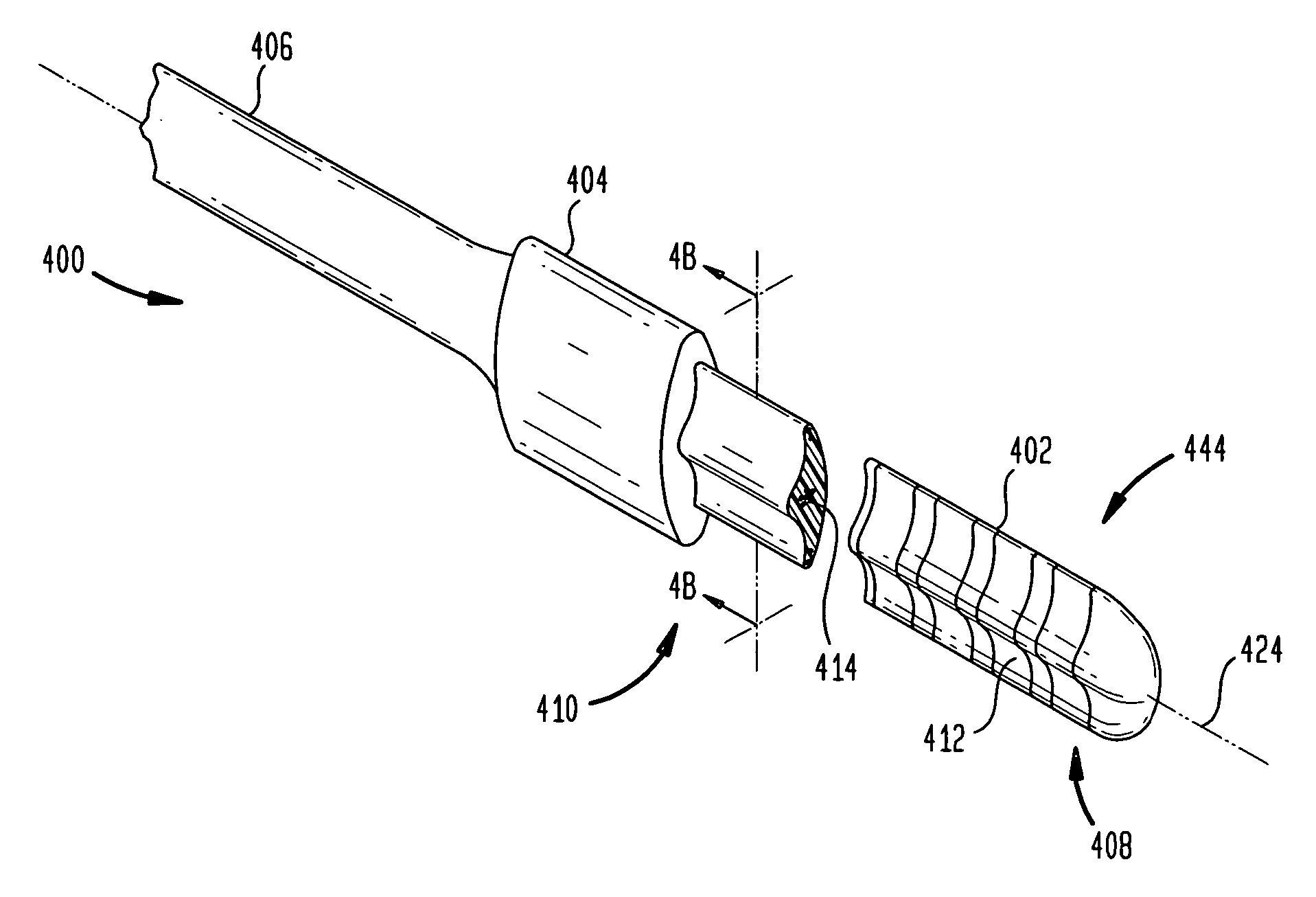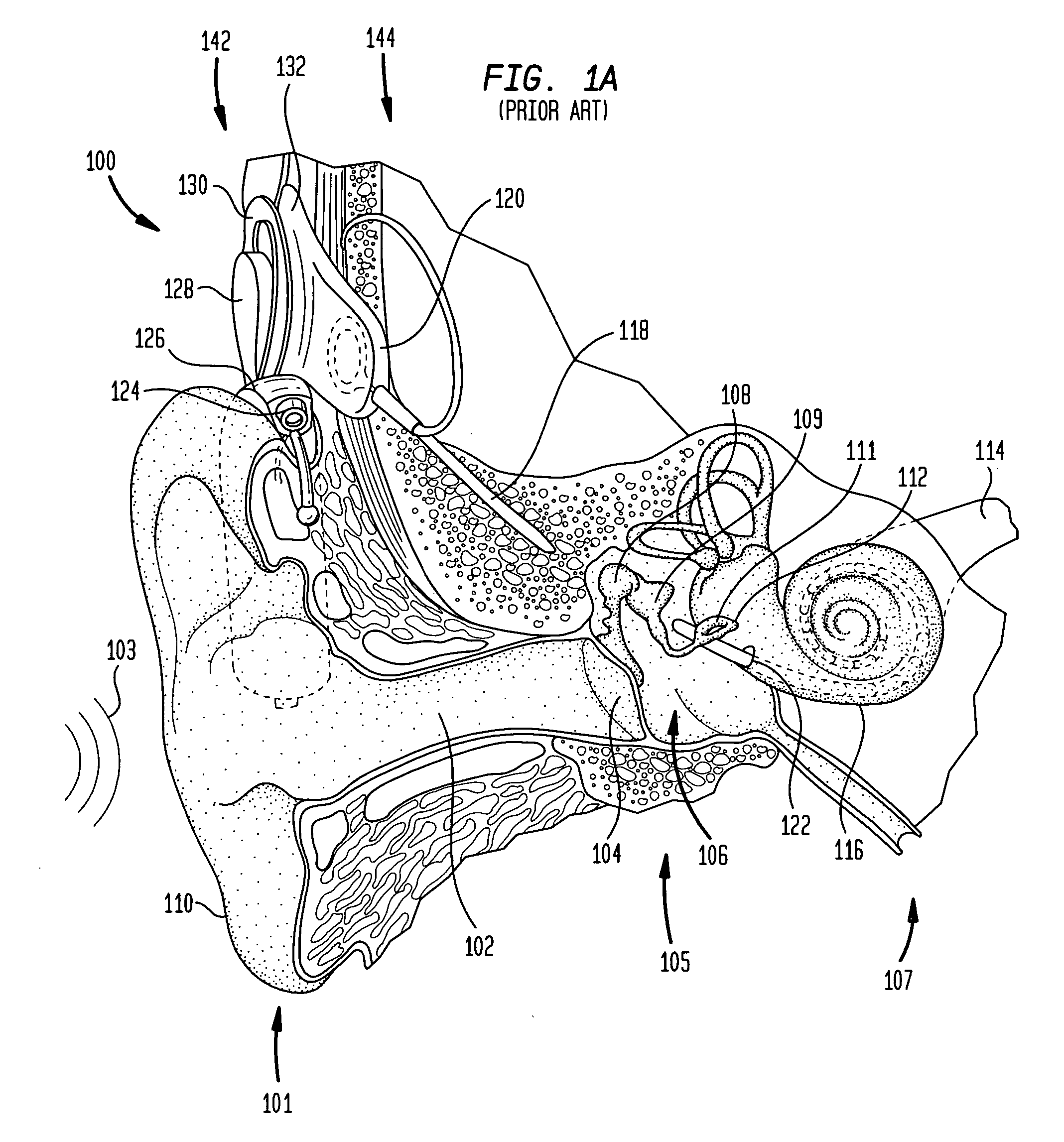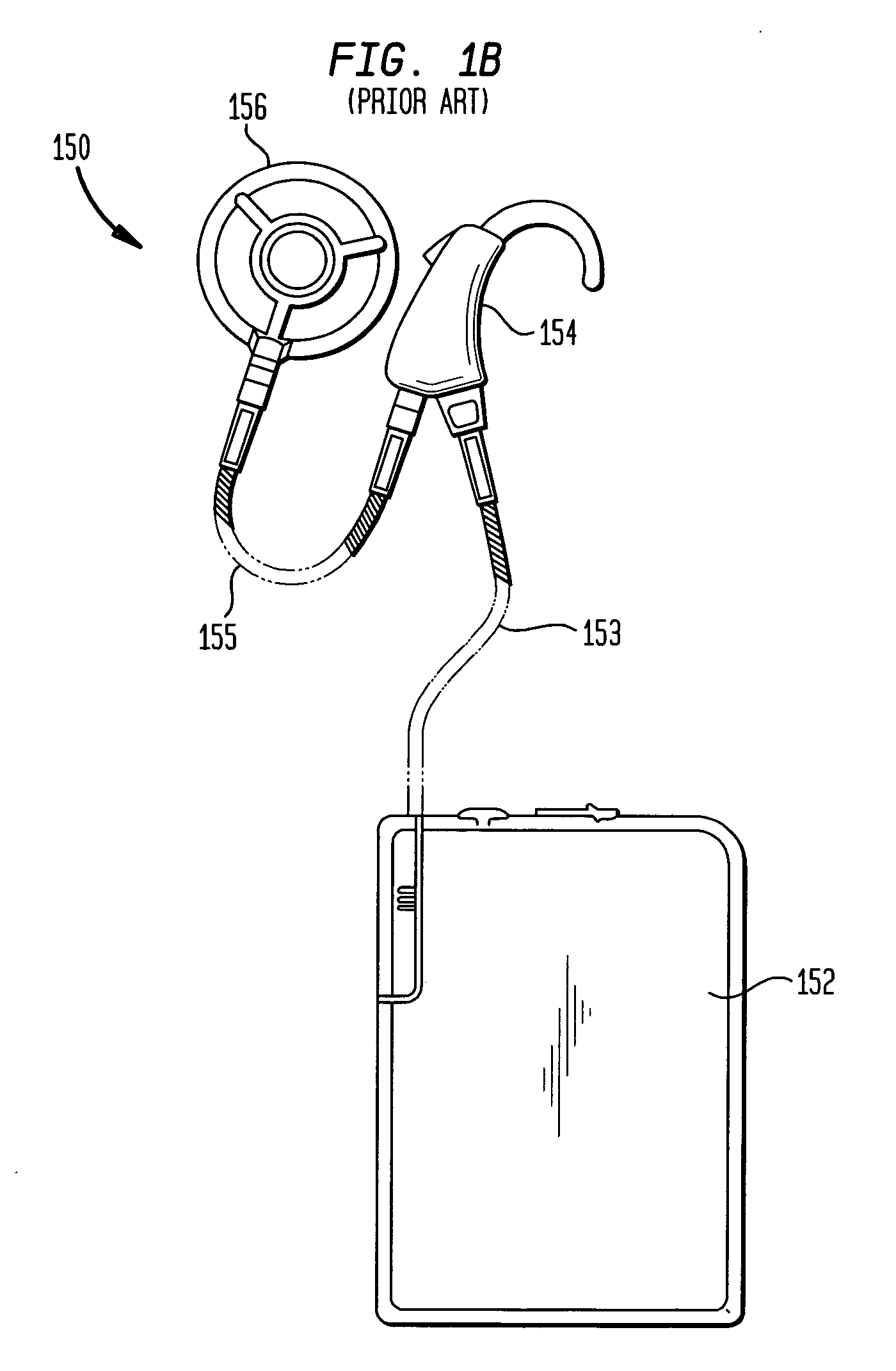Cochlear endosteal electrode carrier member
a carrier member and cochlea technology, applied in the field of endosteal electrode carrier members, can solve the problems of conductive hearing loss, impeded normal mechanical pathways for sound to reach the hair cells in the cochlea, and people may have hearing loss of both types
- Summary
- Abstract
- Description
- Claims
- Application Information
AI Technical Summary
Problems solved by technology
Method used
Image
Examples
Embodiment Construction
[0024] The present invention is generally directed to an elongate electrode carrier member for implantation in a location external to the cochlear canals to position at least one, and likely many, electrodes sufficiently proximate to the organ of Corti to effectively deliver stimulation signals to the auditory nerve fibers of the cochlear. Generally, the carrier member is dimensioned to be implanted in a crevice, channel or pocket formed between the spiral ligament and bony capsule of the cochlear. Embodiments of the carrier member preferably have a minimized volume to accommodate insertion into such a crevice. In addition, embodiments of the carrier member comprise an elongate bulbous central region having electrodes disposed on the medial surface thereof, and elongate tapered side regions laterally extending from the central region. The side regions have rounded edges and are preferably flexible, while the carrier is configured to coil or turn toward the medial surface. This const...
PUM
 Login to View More
Login to View More Abstract
Description
Claims
Application Information
 Login to View More
Login to View More - R&D
- Intellectual Property
- Life Sciences
- Materials
- Tech Scout
- Unparalleled Data Quality
- Higher Quality Content
- 60% Fewer Hallucinations
Browse by: Latest US Patents, China's latest patents, Technical Efficacy Thesaurus, Application Domain, Technology Topic, Popular Technical Reports.
© 2025 PatSnap. All rights reserved.Legal|Privacy policy|Modern Slavery Act Transparency Statement|Sitemap|About US| Contact US: help@patsnap.com



